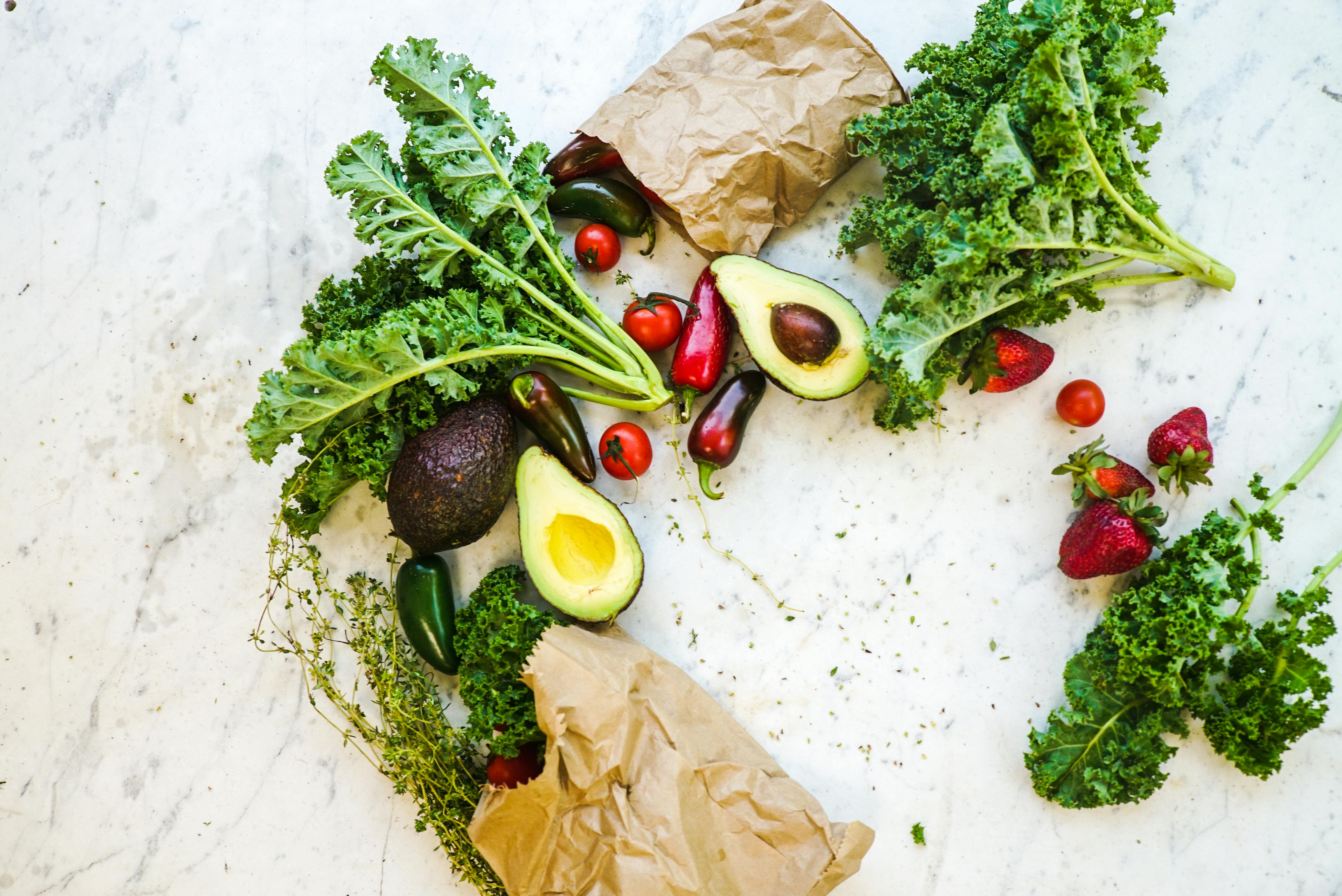Embarking on the ketogenic journey can often feel like navigating a labyrinth with no clear map in hand, but fear not! “Keto Simplified: The Ultimate Diet Guide For Dummies” is here to be your guiding light. This comprehensive guide brilliantly decodes the essentials of the ketogenic lifestyle, tailored to cater to both novices curious about ditching the carbs and seasoned keto enthusiasts seeking to deepen their understanding.
From uncovering the core principles that underpin this high-fat, moderate-protein, and low-carbohydrate diet, to sharing delectable meal plans that won’t make you miss a beat, this resource is packed with practical tips, motivational success stories, and the latest keto trends. Whether you’re aiming to shed some pounds, gain more energy, or simply lead a healthier life, this guide ensures your keto journey is both successful and enjoyable, all while keeping you well-informed and inspired every step of the way.
Keto Simplified:
Understanding the Keto Diet
Definition and origins of the ketogenic diet
The ketogenic, or keto, diet is a low-carb, high-fat eating plan designed to put the body in a state of ketosis. This means your body burns fat for fuel instead of its default energy source, carbohydrates. Originating as a therapeutic diet in the 1920s to treat epilepsy in children, the keto diet has gained popularity worldwide for its potential benefits, extending far beyond seizure control. Today, it’s embraced by many looking to lose weight, enhance brain function, and improve overall health.
How ketosis works in the body
When you drastically reduce your carbohydrate intake, your body runs out of its usual fuel source (glucose) and begins to break down fat for energy, producing molecules called ketones in the process. This metabolic state, known as ketosis, can lead to a reduction in insulin levels and significant weight loss. Achieving ketosis typically requires consuming fewer than 50 grams of carbs per day (though this varies by individual) and can take a few days to a week to enter.
The role of fats, proteins, and carbohydrates in keto
On a ketogenic diet, fats should constitute the majority of your calories, around 70-80%, with proteins making up about 20-25%, and carbohydrates only about 5-10%. This balance encourages your body to rely on fat for energy. Quality fats like avocado, olive oil, and fatty fish are staples, while protein is sourced from meat, fish, and eggs. Carbohydrates are primarily obtained from non-starchy vegetables and nuts.
Benefits of adopting a ketogenic lifestyle
Adopting a ketogenic lifestyle can lead to numerous benefits, including weight loss, improved blood sugar control, enhanced mental clarity, reduced inflammation, and even a lower risk of certain diseases. Many also report higher energy levels and a decrease in cravings for sweets and processed foods.
Getting Started with Keto
Initial steps to transition your diet
Transitioning to a ketogenic diet starts with reducing your carb intake and increasing healthy fat consumption. Begin by eliminating sugary snacks, sodas, bread, pasta, and rice from your diet. Next, focus on incorporating more keto-friendly foods like leafy greens, fatty fish, and nuts. Planning meals ahead can also help make this transition smoother.
Calculating your macros for ketosis
To effectively enter ketosis, calculating your macros—how many grams of fats, proteins, and carbs you should consume daily—is crucial. Several online calculators can help you determine your individual needs based on factors like age, gender, activity level, and weight loss goals. Remember, maintaining a high fat intake while keeping protein moderate and carbs low is key.
Tips for navigating the keto flu
Many beginners experience the “keto flu,” a collection of symptoms including fatigue, headaches, and irritability, as their bodies adjust. To alleviate these, stay well-hydrated, ensure adequate salt intake for electrolyte balance, and consider a gentle transition into carb restriction over a few weeks rather than abruptly.
Importance of hydration and electrolytes
Hydration and maintaining electrolyte balance are vital on a keto diet, as initial water weight loss can disrupt electrolyte levels. Increasing intake of minerals like sodium, potassium, and magnesium can help prevent side effects like cramps, headaches, and fatigue.

This image is property of images.pexels.com.
Keto-Friendly Foods to Embrace
Healthy fats and oils
Embrace healthy fats and oils such as olive oil, coconut oil, butter, and avocado oil. These are crucial for maintaining energy levels and facilitating fat metabolism without spiking your insulin levels.
Lean proteins suitable for keto
Opt for lean proteins like chicken breast, turkey, lean cuts of beef, and fatty fish such as salmon. These will help preserve muscle mass without exceeding your daily protein needs, which could interrupt ketosis.
Low-carb vegetables and fruits
Focus on low-carb vegetables like spinach, kale, broccoli, and other leafy greens. For fruits, berries such as raspberries, strawberries, and blueberries are lower in carbs and can fit into a keto diet in moderation.
Nuts, seeds, and dairy options
Nuts and seeds, including almonds, walnuts, chia, and flaxseeds, are excellent for snacking and adding crunch to meals. Full-fat dairy products like cheese, yogurt, and cream can also be incorporated for additional fat and flavor.
Foods to Avoid on Keto
Common high-carb pitfalls
High-carb foods to avoid include bread, pasta, rice, and potatoes, as well as most fruits and starchy vegetables. These can quickly exceed your daily carb limit and knock your body out of ketosis.
Sugary snacks and beverages
Sugary snacks, cakes, sodas, and fruit juices are high in carbohydrates and sugars, which can disrupt ketosis and lead to weight gain. Steering clear of these foods is essential for maintaining progress.
Starchy vegetables and grains
Starchy vegetables like corn, peas, and carrots, along with grains such as wheat, oats, and barley, are high in carbs and should be limited or avoided to maintain ketosis.
Understanding the impact of artificial sweeteners
While some artificial sweeteners are keto-friendly, they can still trigger cravings for sweet foods in some people. Moreover, the impact of these sweeteners on gut health and insulin response is still debated, so moderation is advised.

This image is property of images.pexels.com.
Meal Planning and Recipes
Simple steps to meal prep for keto
Meal prepping involves planning and preparing your meals ahead of time, ensuring you have keto-friendly options readily available. Start by choosing a few recipes you enjoy, shop for all ingredients in advance, and dedicate a few hours to cooking and storing your meals for the week.
Keto breakfast ideas to start your day
Begin your day with high-fat, low-carb options like eggs cooked in butter with spinach and avocado, a cheese and vegetable omelet, or chia pudding made with full-fat coconut milk.
Quick and easy keto lunches and dinners
For lunch and dinner, opt for dishes like salad with grilled chicken, avocado, and olive oil dressing, zucchini noodles with pesto and cherry tomatoes, or salmon with asparagus cooked in butter.
Satisfying keto snacks and desserts
Satisfy your hunger between meals with snacks like cheese slices, nuts, or cucumber slices with cream cheese. For a sweet treat, consider keto-friendly desserts like almond flour cookies or coconut cream with a handful of berries.
Maintaining a Keto Lifestyle
Tips for dining out and social events
When dining out, opt for dishes that can easily be made keto-friendly, such as steak or fish with a side of vegetables instead of starches. At social events, consider bringing your own snacks or eating beforehand to avoid temptation.
How to stay keto while traveling
Planning ahead is key to staying keto while traveling. Pack your own snacks, such as nuts and cheese, and research restaurants that offer keto-friendly options. When in doubt, simple choices like a bunless burger or salad with protein can be found almost anywhere.
Managing keto in a non-keto household
In households where not everyone is following a keto diet, focus on preparing versatile base dishes that can be adapted for everyone. For example, cook a protein that can be served with different sides, ensuring there are keto-friendly options for you.
Long-term sustainability on keto
Maintaining a keto lifestyle long-term requires flexibility and a focus on overall food quality. Incorporate a variety of foods to ensure you’re getting essential nutrients and consider periodic carb refeeds if it helps with adherence and overall well-being.

This image is property of images.pexels.com.
Health Benefits and Considerations
Weight loss and body composition changes
One of the most celebrated benefits of keto is its ability to promote weight loss and improve body composition by utilizing fat as a primary energy source. Many find it easier to maintain a calorie deficit on keto due to reduced appetite.
Improved energy levels and mental clarity
Following a ketogenic diet can lead to improved energy levels and mental clarity. This is attributed to the steady supply of ketones to the brain, which can enhance cognitive function and focus.
Cardiovascular health and blood sugar control
The keto diet has been shown to improve markers of cardiovascular health, including lowering triglyceride levels and increasing HDL cholesterol. It can also stabilize blood sugar levels, making it beneficial for those with type 2 diabetes or at risk of developing it.
Possible side effects and when to consult a doctor
While many thrive on a keto diet, some might experience side effects like constipation, nutrient deficiencies, or an increase in LDL cholesterol. Always consult with a healthcare professional before starting any new diet, especially if you have existing health conditions.
Success Stories and Motivation
Real-life keto transformation stories
Hearing about others’ successes on keto can be incredibly motivating. Many have shared their journeys, highlighting significant weight loss, improved health, and enhanced quality of life, which can serve as inspiration for those just starting or struggling on their keto journey.
Overcoming challenges on the keto journey
Every journey has its obstacles, but many have found creative ways to overcome them, such as finding alternatives for favorite foods, learning to navigate social situations, and adjusting the diet to fit their personal needs and lifestyle.
Tips and insights from long-term keto enthusiasts
Those who have maintained a keto lifestyle long term often have valuable insights to share, such as the importance of flexibility, focusing on whole foods, and the benefits of incorporating intermittent fasting or exercise.
How to stay motivated on your keto journey
Staying motivated on a keto journey can be supported by setting clear, achievable goals, tracking progress, connecting with a supportive community, and being patient with yourself. Remember, it’s about progress, not perfection.
Navigating Challenges and Plateaus
Common obstacles in sticking to keto
Common challenges include dealing with cravings, social pressure, and hitting a weight loss plateau. Strategies like finding keto-friendly alternatives, planning for social events, and adjusting your macros can help.
What to do if weight loss stalls
If weight loss stalls, reassess your daily caloric intake, consider tightening up on carb counting, and ensure you’re getting enough sleep and managing stress, as these can impact weight loss efforts.
Adjusting your macros and calories
Sometimes, adjusting your macros or reducing your caloric intake slightly can jump-start weight loss again. Always make adjustments gradually and monitor how your body responds.
The importance of sleep, stress management, and exercise
Sleep, stress management, and regular physical activity are crucial for overall health and can impact the effectiveness of the keto diet. Prioritize these as much as your diet for optimal results.
Staying Up-to-date with Keto Research and Trends
Latest studies on keto benefits and risks
Staying informed about the latest research is crucial as scientists continue to uncover the long-term benefits and potential risks of a ketogenic diet. This knowledge can help you make educated decisions about your health journey.
Innovative keto products and supplements
The market for keto products is constantly evolving, offering a variety of supplements, snacks, and meal replacements designed to support a keto lifestyle. While these can be convenient, focusing on whole foods is always preferable.
Evolving dietary guidelines and keto adaptions
Dietary guidelines continue to evolve, and there’s growing acknowledgment of low-carb, high-fat diets like keto. Adapting guidelines to fit personal health goals and nutritional needs is essential.
Emerging trends in the keto lifestyle and dieting world
Keto continues to adapt with emerging trends such as “clean” keto, which emphasizes food quality and whole ingredients. Staying open to adaptations and new information can enhance your keto lifestyle and health outcomes.

